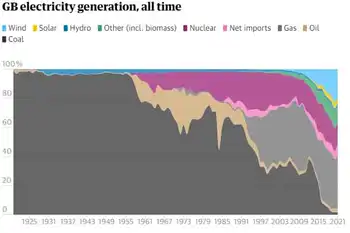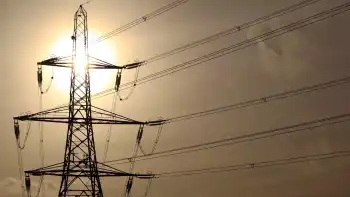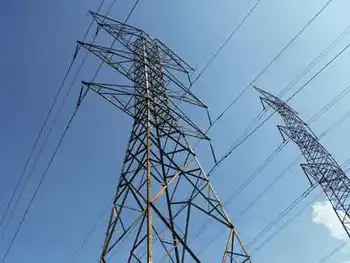BC Hydro cryptic about crypto mining electricity use

Electrical Testing & Commissioning of Power Systems
Our customized live online or in‑person group training can be delivered to your staff at your location.

- Live Online
- 12 hours Instructor-led
- Group Training Available
BC Hydro Crypto Mining Moratorium pauses high-load connection requests, as BCUC reviews electricity demand, gigawatt-hours and megawatt load forecasts, data center growth, and potential rate impacts on the power grid and industrial customers.
Key Points
A BC order pausing crypto mining connections while BC Hydro and BCUC assess load, grid impacts, and ratepayer risks.
✅ 18-month pause on new high-load crypto connections
✅ 1,403 MW in requests suspended; 273 MW existing or pending
✅ Seeks to manage demand, rates, and grid reliability
In its Nov. 1, 2022 load update briefing note to senior executives of the Crown corporation, BC Hydro shows that the entire large industrial sector accounted for 6,591 gigawatt-hours during the period – one percent less than forecast in the service plan.
BC Hydro censored load statistics about crypto mining, coal mining and chemicals from the briefing note, which was obtained under the freedom of information law and came amid scrutiny over B.C. electricity imports because it feared that disclosure would harm Crown corporation finances and third-party business interests.
Crypto mining requires high-powered computers to run and be cooled around the clock constantly. So much so that cabinet ordered the BC Utilities Commission (BCUC) last December to place an 18-month moratorium on crypto mining connection requests, while other jurisdictions, such as the N.B. Power crypto review, undertook similar pauses to assess impacts.
In a news release, the government said 21 projects seeking 1,403 megawatts were temporarily suspended. The government said that would be enough to power 570,000 homes or 2.1 million electric vehicles for a year.
A report issued by BC Hydro before Christmas said there were already 166 megawatts of power from operational projects at seven sites. Another six projects with 107 megawatts were nearing connection, bringing its total load to 273 megawatts.
Richard McCandless, a retired assistant deputy minister who analyzes the performance of BC Hydro and the Insurance Corp of British Columbia, said China's May 2021 ban on crypto mining had a major ripple effect on those seeking cheap and reliable power.
"When China cracked down, these guys fled to different areas," McCandless said in an interview. "So they took their computers and went somewhere else. Some wound up in B.C."
He said BC Hydro's secrecy about crypto loads appears rooted in the Crown corporation underestimating load demand, even as new generating stations were commissioned to bolster capacity.
"Crypto is up so dramatically; they didn't want to show that," McCandless said. "Maybe they didn't want to be seen as being asleep at the switch."
Indeed, BCUC's April 21 decision on BC Hydro's 2021 revenue forecasts through the 2025 fiscal year included BC Hydro's forecast increase for crypto and data centres of about 100 gigawatt-hours through fiscal 2024 before returning to 2021 levels by 2025. In addition, the BCUC document said that BC Hydro's December 2020 load forecast was lower than the previous one because of project cancellations and updated load requests, amid ongoing nuclear power debate in B.C.
"Given the segment's continued uncertainty and volatility, the forecast assumes these facilities are not long-lived," the BC Hydro application said.
A September 2022 report to the White House titled "Crypto-Assets in the United States" said increased electricity demand from crypto-asset mining could lead to rate increases.
"Crypto-asset mining in upstate New York increased annual household electric bills by [US]$82 and annual small business electric bills by [US]$164, with total net losses from local consumers and businesses estimated to be [US]$179 million from 2016-2018," the report said. The information mentioned Plattsburgh, New York's 18-month moratorium in 2018. Manitoba announced a similar suspension almost a month before B.C.
B.C.'s total core domestic load of 23,666 gigawatt-hours was two percent higher than the service plan amid BC Hydro call for power planning, with commercial and light industrial (9,198 gigawatt-hours) and residential (7,877 gigawatt-hours) being the top two customer segments.
"A cooler spring and warmer summer supported increased loads, as the Western Canada drought strained hydropower production regionally. However, warmer daytime temperatures in September impacted heating more than cooling," said the briefing note.
"Commercial and light industrial consumption benefited from warmer temperatures in August but has also been impacted to a lesser degree by the reduced heating load in the first three weeks of October."
Loads improved relative to 2021, but offices, retail businesses and restaurants remained below pre-pandemic levels. Education, recreation and hotel sectors were in line with pre-pandemic levels. Light industrial sector growth offset the declines.
For heavy industry, pulp and paper electricity use was 15 percent ahead of forecast, but wood manufacturing was 16 percent below forecast. The briefing note said oil and gas grew nine percent relative to the previous year but, alongside ongoing LNG power demand, fell nine percent below the service plan.











